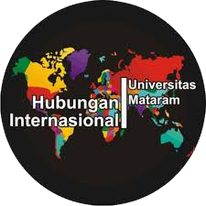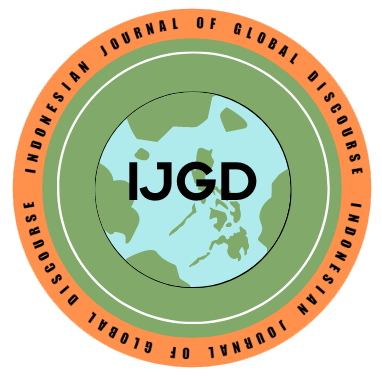Trend Analysis of Indonesian Migrant Worker Profiles: Redirecting Strategy on Indonesia’s Demographic Bonus
DOI:
https://doi.org/10.29303/ijpss.v5i1.125Keywords:
Indonesia Migrant Workers, Demographic Bonus, Population AgingAbstract
Indonesian migrant workers (IMW) make a significant impact not only for themselves, but also for their families, and country’s economy. The top destinations for PMI include Malaysia, Saudi Arabia, Hong Kong, Taiwan, and Singapore, where they find employment in various sectors. However, Indonesia is entering a demographic bonus era, characterized by a large proportion of the population being in the working-age group. This demographic shift presents opportunities for economic growth, job creation, and increased productivity if effectively managed. Meanwhile, the rise of ageing population in several developed countries open more opportunities for PMI. Using a mixed-methods approach, with push full migration, population trend and aging population analysis, this study aims to analyze the evolving trends in PMI profiles and reassess their position in the international labor market. The study highlights the importance of understanding the changing patterns and identifying Indonesia's current positioning to devise effective strategies for PMI. The study findings indicate that the characteristics of PMI have become more diverse and cannot be represented only by one single profile. Based on the analysis, Indonesia has the potential to unlock its workforce potential, drive economic growth, and establish mutually beneficial partnerships by capitalizing on the demographic bonus. Strategic leveraging of this advantage and optimizing opportunities in the international labor market can facilitate Indonesia's economic development while prioritizing the well-being of its migrant workers.
References
Allen, E. (2016). Analysis of Trends and Challenges in the Indonesian Labor Market. Asia Development Bank Report. Retrieved from https://www.adb.org/sites/default/files/publication/182935/ino-paper-16-2016.pdf
Badan Pusat Statistik. (2020). Proporsi Volume Remitansi (Dalam US Dollars) Terhadap Total PDB. Badan Pusat Statistik. Retrieved from https://www.bps.go.id/indikator/indikator/view_data/0000/data/1258/sdgs_17/1
Borjas, G. J. (1989). Economic Theory and International Migration. International Migration Review, 23(3), 457-485.
Djafar, Z. (2012). Profil dan Perkembangan Ekonomi Politik Afrika. Universitas Indonesia Library. Jakarta: UI Press.
Enrico, D. (2020). Japan’s Ageing Society. European Parliament Research. Retrieved from https://www.europarl.europa.eu/thinktank/en/document/EPRS_BRI(2020)659419
Global Migration Group (GMG). (2017). Handbook for Improving the Production and Use of Migration Data for Development. Retrieved from https://www.knomad.org/sites/default/files/2017-11/Handbook%20for%20Improving%20the%20Production%20and%20Use%20of%20Migration%20Data%20for%20Development.pdf
Goldstone, J.A. (2010) The New Population Bomb: The Four Megatrends That Will Change the World. Foreign Affairs. Retrieved from https://www.foreignaffairs.com/articles/2010-01-01/new-population-bomb
IOM. (2022). World Migration Report 2022. Retrieved from https://publications.iom.int/books/world-migration-report-2022
Jati, WR. (2015). Bonus Demografi sebagai Mesin Pertumbuhan Ekonomi: Jendela Peluang atau Jendela Bencana di Indonesia?. Jurnal Populasi 23 (1). Retrieved from: https://jurnal.ugm.ac.id/populasi/article/view/8559/6591
Keohane, R.O. & Nye, J.S. (2011). Power and Interdependence. England: Longman Publishing Group
Lee, E.S. (1966). A theory of migration. Demography, 3(1), 47-57. Retrieved from https://www.jstor.org/stable/2060063
Makhroja, M. N., Trisonia, L., & Putri, M. I. (2023). Fiscal Balance, Aging Society, and Migration Flow in the European Union. Hasanuddin Journal of Strategic and International Studies (HJSIS), 1(2),1-14. https://doi.org/10.20956/hjsis.v1i2.25350
Santika, S.F. (May 20, 2023). Bonus Demografi Indonesia Diproyeksi Mencapai Puncak pada 2050. Kata Data. Retrieved from https://databoks.katadata.co.id/datapublish/2023/05/20/bonus-demografi-indonesia-diproyeksi-mencapai-puncak-pada-2050#:~:text=Badan%20Pusat%20Statistik%20(BPS)%20memproyeksikan,dan%20di%20atas%2064%20tahun.
United Nations. (2015). World Population Prospects: The 2015 Revision. Department of Economic and Social Affairs, Population Division. Retrieved from: https://population.un.org/wpp/
Viotti, P.R. & Kaupi, M. (2010). International Relations Theory. New York: Pearson Education
UNDESA. (2022). Migration and Families. UN Department of Economic and Social Affairs Policy Brief No.133. Retrieved from https://www.un.org/development/desa/dpad/wp-content/uploads/sites/45/publication/PB_133.pdf
World Bank. (2013). Middle-Class Growth: A Global Phenomenon. Retrieved from https://www.worldbank.org/en/news/feature/2013/04/08/middle-class-growth-a-global-phenomenon
World Bank. (2017). Indonesias Global Workers Juggling Opportunities & Risks. World Bank Report. Retrieved from https://pubdocs.worldbank.org/en/357131511778676366/Indonesias-Global-Workers-Juggling-Opportunities-Risks.pdf
Downloads
Published
Issue
Section
License
Copyright (c) 2023 Dina Eka Putri, Mega Nisfa Makhroja

This work is licensed under a Creative Commons Attribution-NonCommercial 4.0 International License.













